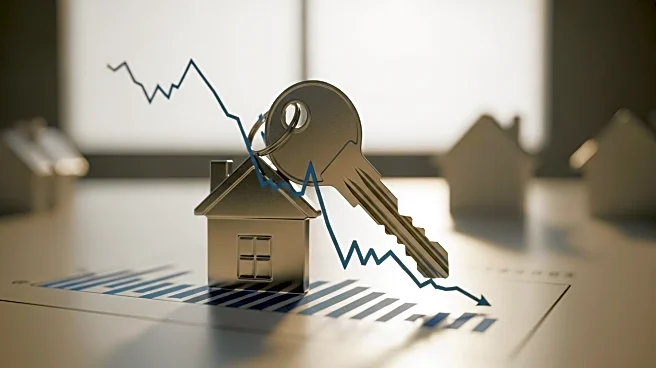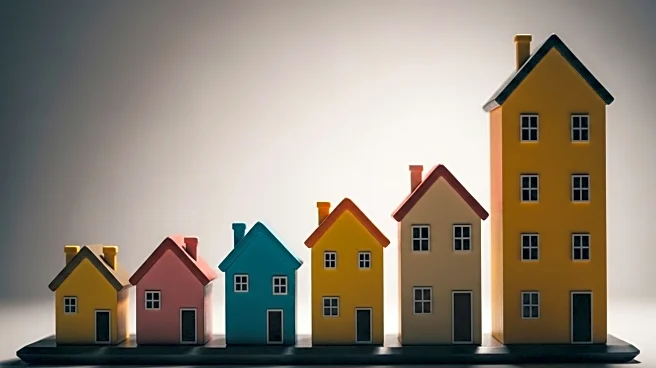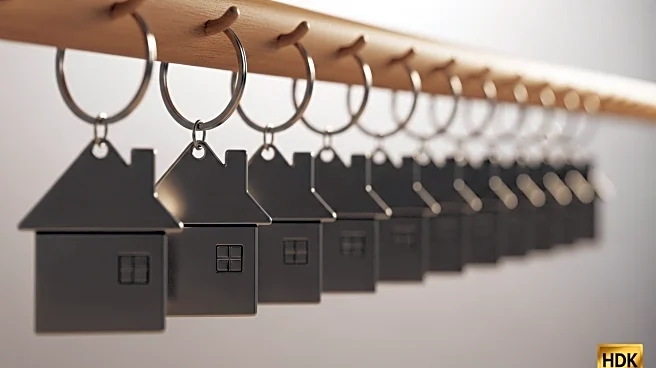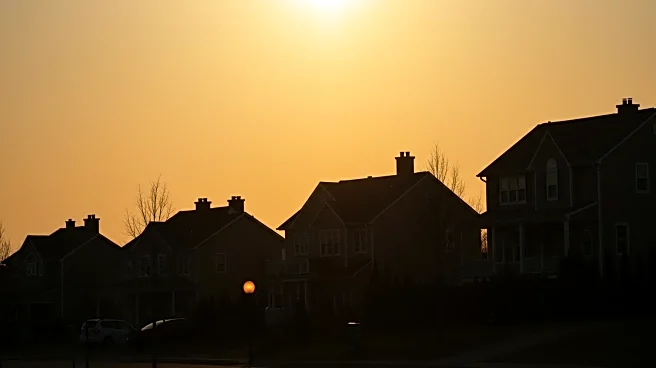What's Happening?
A recent report from Realtor.com reveals a significant decline in home affordability for median-income buyers in the United States, primarily due to rising mortgage rates. The report, titled the 2025 Buyer Power Report, indicates that only 28% of homes on the market are affordable for the typical household, a sharp decrease from previous years. Despite a 15.7% increase in wages since 2019, borrowing costs have escalated faster, reducing the maximum affordable home price for a median-income household to $298,000, down from $325,000 in 2019. The report highlights that mortgage rates have hovered around 6.75% through July, resulting in a $600 increase in monthly payments for a $320,000 fixed-rate loan compared to 2019's average rate. This increase translates to an additional $7,200 annually for buyers, significantly impacting their purchasing power.
Why It's Important?
The decline in home affordability has broad implications for the U.S. housing market and economy. As mortgage rates rise, fewer homes remain within reach for average buyers, potentially slowing down home sales and affecting the real estate industry. This situation forces many buyers to reconsider their options, such as opting for smaller homes, relocating to less expensive areas, or postponing homeownership. The report underscores the challenges faced by buyers in cities like Milwaukee and Houston, where buying power has dropped significantly. Conversely, only a few metros, including Cleveland, have seen improvements in buying power due to strong wage growth. The overall trend suggests a growing disparity in housing affordability across different regions, which could influence migration patterns and economic stability.
What's Next?
As mortgage rates continue to impact affordability, stakeholders in the housing market may need to adapt to these changes. Policymakers might consider measures to address housing affordability, such as incentives for first-time buyers or adjustments in lending practices. Real estate professionals may focus on educating buyers about financing options and exploring alternative housing solutions. Additionally, potential buyers might need to adjust their expectations and strategies, such as saving for larger down payments or exploring different housing markets. The ongoing economic conditions and interest rate trends will likely play a crucial role in shaping the future of the U.S. housing market.
Beyond the Headlines
The decline in home affordability raises ethical and social concerns about access to housing. As the gap between wages and borrowing costs widens, it may exacerbate socioeconomic disparities, limiting opportunities for homeownership among lower-income groups. This trend could lead to increased demand for rental properties, affecting rental prices and availability. Furthermore, the housing market's dynamics might influence broader economic indicators, such as consumer spending and financial stability, as households allocate more resources to housing expenses.












